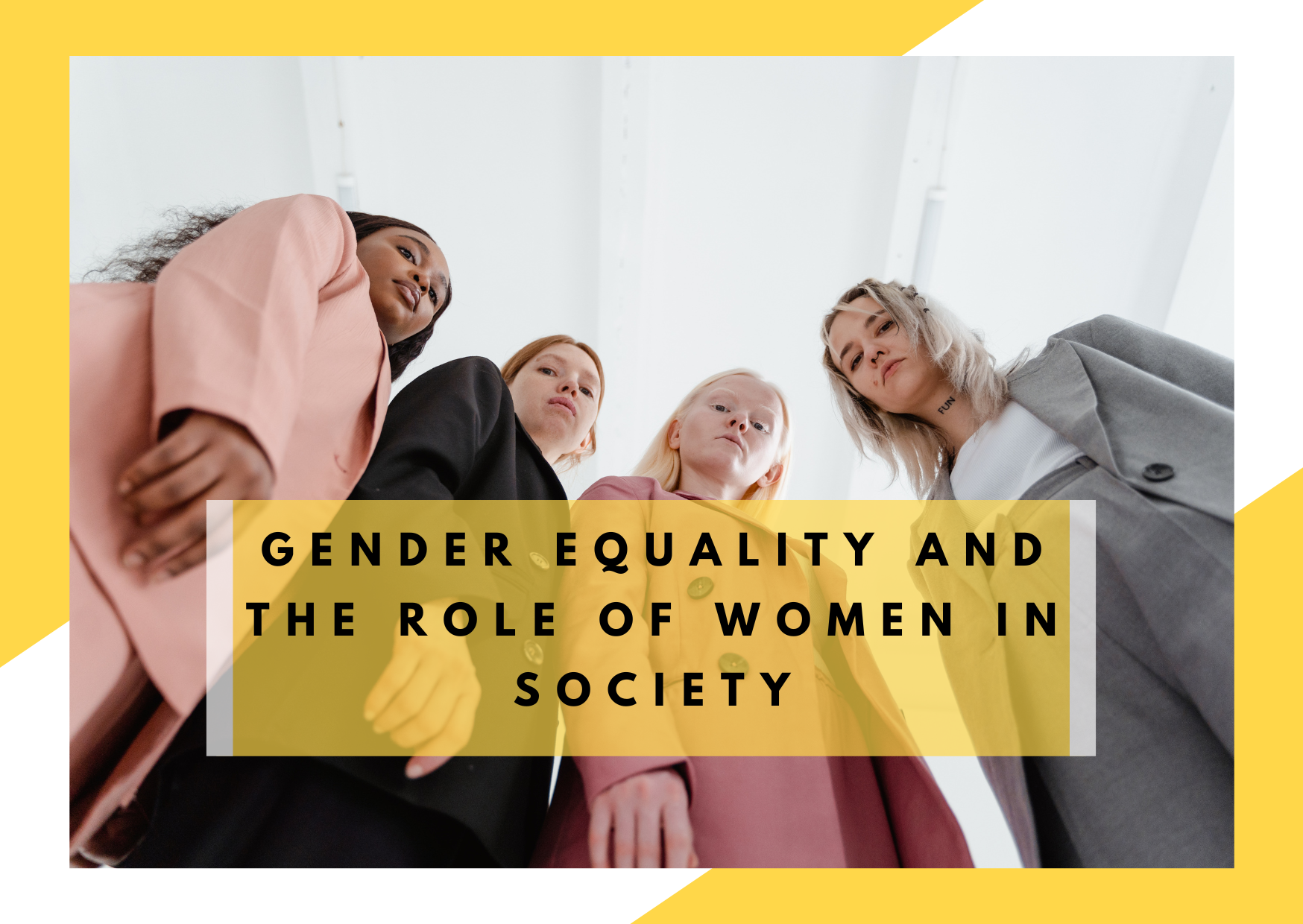August 13, 2025

Different societies, at different times, have attributed various roles and significance to the figure of a woman, shaped by historical events and cultural contexts. Who is a woman? It’s a simple question, but the answers are complex.
Nvard’s Story
I am Armenian, and my father, after having two sons, became the father of a daughter, and he was happy about it. My mother is a strong, intelligent woman who received the best education of her time. She has always been a leader, held managerial positions, and has been listened to, respected, and accepted. My grandmother only finished the 8th grade and started earning money. She married out of love, but her husband (my grandfather) was overly jealous and didn’t allow her to work. It was only when their two daughters were already attending university that she started working as a seamstress in a kindergarten. My grandmother reached this “compromise” with my grandfather through the mediation of her daughters.
My great-grandmother had no opportunities for education; she was a poor woman who had never even traveled beyond her village. When she was married off to a man from a neighboring town, her family rejoiced.
I grew up with my brothers, and until the end of primary school, my friends were their friends. I played football with them, went to karate, and it was wonderful. I have what I have today because my family and relatives respected me as a woman. They never limited me, never deprived me, but rather helped, inspired, and supported me. They have always been there for me, and I am proud of that.
But are all women given such opportunities?
Sadly, no.
Women’s Rights in Armenia
If we go a bit further back in time, even in pagan times, women were considered the foundation of the family among Armenians. This is evidenced by poetic fragments, legends, and historical testimonies. According to the Armenian historian Agathangelos, in pre-Christian times, Armenian women were regarded as “the mother source,” “life-giving,” “breath and life.” In the pagan pantheon, goddesses like Anahit, Astghik, and Nane played important roles.
In earlier times, Anahit was the goddess of war, indirectly indicating that women in ancient times participated in military activities, possibly not in secondary roles. As societal relations evolved, Anahit became associated with fertility, reproduction, and childbirth.
With the advent of Christianity, the worship of women was expressed through the image of the Virgin Mary. Many believe that the figure of the Virgin Mary in Armenian culture is a re-imagining of the goddess Anahit.
From the 4th century onwards, ancient Armenian legal documents emphasized the equality of rights between women and men. Such provisions are found in both ecclesiastical and secular documents (in medieval times, Armenian law was based on ecclesiastical canons).
The equality of women and men is mentioned in the Canons of Ashtishat (4th century), the Canons of Shahapivan (5th century), and David Alavkavordi’s “Canons” (12th century).
According to the Canons of Shahapivan (444 AD), a woman should manage family property if her husband abandons her without reason, and she can bring a new husband. In David Alavkavordi’s “Canons,” marriage is valid only with mutual consent between the bride and groom: “Marriage is invalid if based on violence.”
Furthermore, secular (non-ecclesiastical) legal documents also paid due attention to women’s rights. The earliest mentions are found in the 5th-century “Code of King Vachagan,” but more comprehensive and foundational works appeared in the medieval Armenian legal thought, particularly in the “Code of Armenian Laws” by Mkhitar Gosh. His work addresses the roles of men and women in the family and emphasizes the importance of women’s education. “Educated women are a treasure to society,” wrote Mkhitar Gosh in the 12th century. His “Code” also contains provisions against forced marriages, encourages equal distribution of property, and imposes penalties on those who commit violence against women. It also speaks about the recognition and respect for women’s honor and dignity, their right to marry, divorce, remarry, and more.
In modern times, the formulations of gender equality between men and women are presented in Shahamir Shahamirian’s “Declaration of Glory” (1773). This is considered the first Armenian constitution. “Any human being, whether Armenian or of another nationality, whether male or female, born inside or outside Armenia, must live in equality and be equal in their activity. No one has the right to subjugate others, and workers must be paid as usual for their work,” it states in the “Declaration of Glory.”
Finally, the “National Constitution” of Constantinople (adopted in 1860 and ratified by the Sultan in 1863) explicitly mentions several rights for women, including the right to equal education with men, social security, and involvement in public and political activities.
Thus, Article 14.1 of the Constitution of the Republic of Armenia, which enshrines women’s equality, is not based on the constitutions of other countries, but on the history of Armenian legal thought.
However, surprisingly, women’s public involvement was more active under Ottoman Turkish rule, especially in Constantinople. In the late 19th century, several Armenian women in this city founded organizations and joined political parties. After graduating from girls’ schools, many of these women furthered their education in Europe. Among the women who became famous for their active public engagement in late 19th-century Constantinople were Srbuhi Tüsab (Vahanyan) and Zabel Asadur. They drafted the “Women’s Rights Declaration,” which advocated for the following principles:
- Equal rights for men and women,
- The right to choose one’s profession,
- The abolition of double moral standards, which men benefit from in marital life,
- The right to higher education as a means of improving child upbringing,
- Equal participation of women in community activities,
- The abolition of dowries,
- Recognition of the role of women in the preservation of the nation and the transmission of its culture.
This declaration essentially carried the idea of ensuring women’s financial independence.
Women in the Soviet Regime
In Soviet Armenia, there was a noticeable activation of women’s roles, especially in public and economic life. The Communist Party initially declared its commitment not only to ensure gender equality but also to free women from degrading household chores. The Communist Party sought to use women actively in the destruction of feudal and bourgeois traditions. This policy led to women becoming the majority in several professions (doctors, teachers). In the 1980s, Soviet Armenia had 9,000 female scientists, an equal number of female doctors, and 30,000 female teachers. Some women held leadership positions in major enterprises, particularly in the light and food industries and trade.
To emphasize women’s equality, the USSR celebrated International Women’s Day on March 8 with great pomp, a celebration that was unmatched by any other country. From 1965 onwards, March 8 became a non-working day, followed by several other socialist countries.
However, women’s participation in political life was mostly symbolic. Women were never part of the Communist Party leadership, and their participation in the parliament was largely ceremonial. Just before Armenia’s independence, the first Supreme Council of Armenia in 1990 had 260 members, of whom only 11 were women.
However, during the Soviet period, there were also significant restrictions on women’s rights. For example, beauty contests were never held under the Soviet regime to avoid undermining the image of the “working woman.” Although the first decades of Soviet rule contributed significantly to women’s engagement in various spheres of public life, gender inequality began to become more apparent in later decades.
Today, gender inequality still exists, as evidenced by rising domestic violence and limited female participation in politics and leadership roles. In Armenia today, 14% of the National Assembly members are women, and out of 16 government ministers, only three are women. The country’s Chief Prosecutor is a woman. Yet, gender inequality is not considered a pressing issue in Armenia today.
